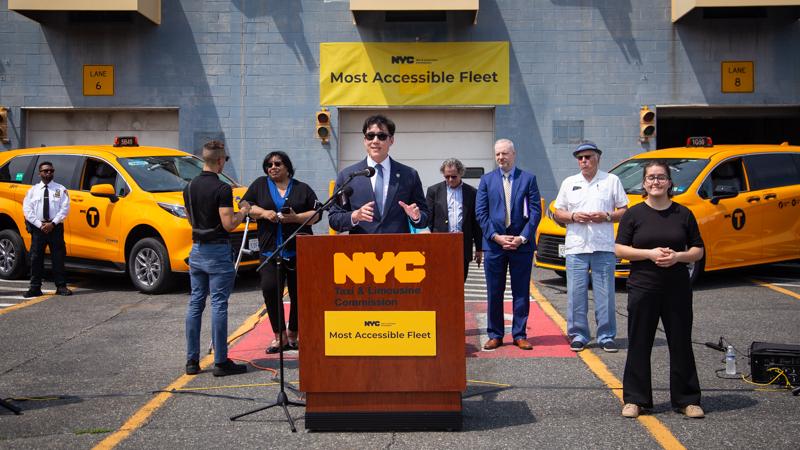NYC Taxi and Limousine Commission Introduces New Protections and Pay Standards for Ride-Hailing Drivers
Revised Minimum Wage Guidelines for Uber and Lyft Drivers in New York City
The New York City Taxi and Limousine Commission (TLC) has enacted groundbreaking regulations to enhance the financial well-being of ride-hailing drivers working with platforms like Uber and Lyft. These updated rules establish a higher baseline for driver compensation, reflecting the increasing costs associated with vehicle upkeep and urban driving demands. Alongside the pay adjustments, the TLC has implemented safeguards to prevent abrupt deactivations—commonly known as “lockouts”—thereby promoting job security and operational transparency for drivers.
Highlights of the new compensation framework include:
- Introduction of a minimum pay rate per mile and per minute, indexed to inflation to maintain real value over time
- Ban on immediate suspensions or platform lockouts without documented justification
- Requirement for advance notice before any changes to pay structures take effect
- Enhanced procedures for drivers to dispute pay discrepancies or lockout decisions
| Compensation Element | Previous Rate | Updated Minimum Rate |
|---|---|---|
| Per Mile | $0.90 | $1.20 |
| Per Minute | $0.15 | $0.25 |
| Cancellation Fee | $5.00 | $7.00 |
Strengthened Lockout Safeguards to Protect Ride-Hailing Drivers
To address the instability caused by sudden platform lockouts, the TLC has introduced comprehensive protections ensuring drivers are not unfairly barred from accessing ride-hailing apps during critical periods. These measures guarantee that drivers receive timely warnings and maintain a minimum income during any enforced downtime, reducing the financial uncertainty that has long plagued gig workers in the city.
Key components of the lockout protection policy include:
- Advance Warning: Drivers must be notified at least 30 minutes before any lockout is enacted.
- Minimum Earnings Guarantee: Compensation during lockouts will meet or exceed the city’s mandated base fare hourly rate.
- Dispute Resolution: A streamlined appeals process with a 24-hour response window for drivers contesting lockouts.
| Protection Aspect | Description |
|---|---|
| Notification Period | 30 minutes prior to lockout activation |
| Guaranteed Pay | At least the city’s base fare per hour during lockouts |
| Appeals Process | Driver disputes resolved within 24 hours |
Evaluating the Effects of Increased Pay and Lockout Protections on Drivers and Riders
The implementation of these new pay standards and lockout protections is expected to substantially improve the financial outlook for NYC’s ride-hailing drivers. Analysts forecast a 15-20% rise in average hourly earnings, which will help offset inflationary pressures and rising vehicle maintenance costs. Furthermore, the lockout safeguards will provide drivers with greater job stability, reducing income volatility caused by sudden platform restrictions.
From a service perspective, these changes are likely to encourage more drivers to remain active during high-demand periods, thereby decreasing passenger wait times. However, experts warn that these benefits may come with a slight increase in fares as companies adjust to higher operational costs. The table below summarizes the anticipated impacts:
| Impact Factor | Projected Outcome |
|---|---|
| Driver Income | Increase by 15-20% |
| Availability of Drivers | More drivers active during peak hours |
| Passenger Wait Times | Reduction by approximately 10-15% |
| Fare Adjustments | Moderate fare increases possible |
Strategies for Effective Enforcement and Industry Collaboration
Ensuring the successful adoption of these new regulations requires coordinated efforts among regulators, ride-hailing companies, and drivers. The TLC recommends instituting regular compliance audits and transparent reporting systems to monitor adherence and swiftly resolve disputes. Leveraging technology—such as real-time earnings dashboards integrated into driver apps—can enhance oversight while respecting driver privacy. Additionally, educating drivers about their rights and the new rules is critical to empowering them to advocate for fair treatment.
Best practices for smooth implementation include:
- Open Communication: Dedicated support channels for drivers to report issues or seek guidance.
- Ongoing Training: Workshops and seminars updating drivers and management on regulatory changes and compliance methods.
- Stakeholder Engagement: Regular dialogue forums between regulators and company representatives to proactively address challenges.
| Initiative | Responsible Entity | Success Metric |
|---|---|---|
| Monthly Compensation Audits | NYC Taxi and Limousine Commission | Publicly available audit reports |
| Driver Rights Awareness Programs | Ride-Hailing Companies | Driver participation exceeding 75% |
| Timely Complaint Resolution | Customer Service Teams | Issue resolution within 72 hours |
Final Thoughts
The NYC Taxi and Limousine Commission’s recent approval of increased minimum pay and reinforced lockout protections represents a pivotal advancement for app-based ride-hailing drivers. As New York City continues to adapt to the dynamic transportation landscape, these reforms aim to provide drivers with enhanced financial security and safeguard their livelihoods amid a competitive gig economy. The coming months will be critical in observing how these policies influence driver satisfaction, service quality, and overall market stability.













